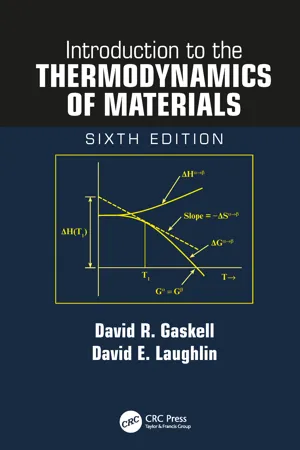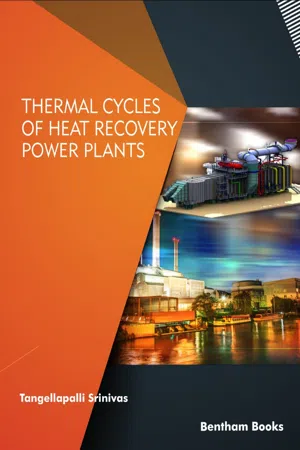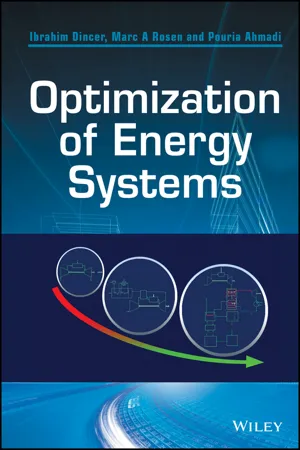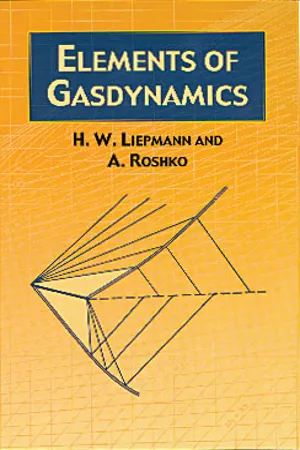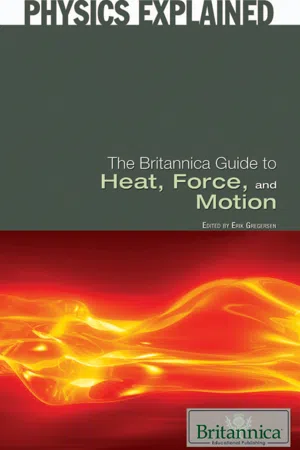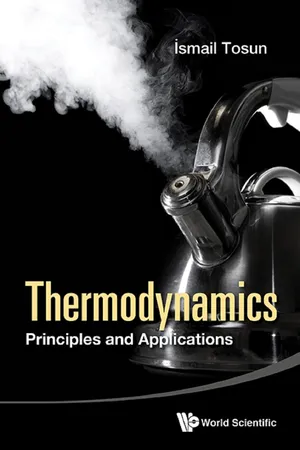Technology & Engineering
Closed System Thermodynamics
Closed system thermodynamics refers to the study of energy and heat transfer within a system that does not exchange matter with its surroundings. In this context, the focus is on understanding the internal energy changes and heat interactions within the system, without considering external influences. This approach allows for the analysis of energy transformations and the development of thermodynamic principles for various engineering applications.
Written by Perlego with AI-assistance
Related key terms
Related key terms
1 of 4
Related key terms
1 of 3
8 Key excerpts on "Closed System Thermodynamics"
- eBook - ePub
- Michael J. Moran, Howard N. Shapiro, Daisie D. Boettner, Margaret B. Bailey(Authors)
- 2018(Publication Date)
- Wiley(Publisher)
surroundings. To facilitate this, thermodynamics has been extended to the study of systems through which matter flows, including bioengineering and biomedical systems.The objective of this chapter is to introduce you to some of the fundamental concepts and definitions that are used in our study of engineering thermodynamics. In most instances this introduction is brief, and further elaboration is provided in subsequent chapters.LEARNING OUTCOMES
When you complete your study of this chapter, you will be able to…- Explain several fundamental concepts used throughout the book, including closed system, control volume, boundary and surroundings, property, state, process, the distinction between extensive and intensive properties, and equilibrium.
- Identify SI and English Engineering units, including units for specific volume, pressure, and temperature.
- Describe the relationship among the Kelvin, Rankine, Celsius, and Fahrenheit temperature scales.
- Apply appropriate unit conversion factors during calculations.
- Apply the problem-solving methodology used in this book.
1.1 Using Thermodynamics
Engineers use principles drawn from thermodynamics and other engineering sciences, including fluid mechanics and heat and mass transfer, to analyze and design devices intended to meet human needs. Throughout the twentieth century, engineering applications of thermodynamics helped pave the way for significant improvements in our quality of life with advances in major areas such as surface transportation, air travel, space flight, electricity generation and transmission, building heating and cooling, and improved medical practices. The wide realm of these applications is suggested by Table 1.1 - eBook - ePub
- David R. Gaskell, David E. Laughlin(Authors)
- 2017(Publication Date)
- CRC Press(Publisher)
1 Introduction and Definition of Terms1.1INTRODUCTIONThe term thermodynamics is related to the two Greek words therme and dynamikos , which translate into English as “heat” and “power” (or “movement”), respectively. Thermodynamics is the physical science that focuses on the relationship between energy and work as well as the equilibrium states and variables of systems that are being investigated. Importantly, thermodynamics defines heat and identifies it as the process in which energy is transferred from one region to another down a temperature gradient. In this text, we will mainly use the phrase thermal energy to identify this form of energy transfer, but sometimes the word heat will be used. Thermodynamics deals with the conservation of energy as well as the conversion of the various forms of energy into each other or into work. Thermodynamics is concerned with the behavior of and interactions between portions of the universe denoted as systems and those portions of the universe called the surroundings or the environment . The system is that part of the universe we wish to investigate in detail, and the surroundings is that part of the universe outside the system which may interact with it by exchanging energy or matter. The system may perform work on the surroundings or have work performed on it by the surroundings. The boundary or wall between the system and the surroundings is what allows such interactions. In what we will call simple thermodynamic systems , the surroundings interacts with the system only via pressure and temperature changes. The composition remains constant in simple systems.It is convenient to characterize systems by the kinds of interactions that are allowed between them and their surroundings.1.Isolated systems - eBook - ePub
- Tangellapalli Srinivas(Author)
- 2021(Publication Date)
- Bentham Science Publishers(Publisher)
viz. turbine, condenser, pump, and boiler. The feedwater is heated with a heat source and turned into superheated steam. Inthe condenser, the vapour is condensed into a saturated liquid state by air circulation or water circulation. The power plant handles various fluid lines such as fuel, air, cooling oil, steam, circulating water, feedwater, and hot gas. Similarly, the systems also involve heat and work transfers. Therefore, the thermodynamic system can be described with mass and energy transactions. To understand the nature of system, it is required to define the terminology used in the system, and they are surroundings, boundary, control surface, control volume, etc. The space outside the system is called as surroundings. Boundary is the enclosure that separates the system from the surroundings. The boundary may be real or imaginary. It is a stationary boundary or moving boundary. The system and its surroundings together are called as the universe. Thermodynamic systems can be grouped into an open system, closed system, and isolated system.In an open system, the mass and energy cross the boundary. In this system, the fixed region in space is the control volume, and the surface of the control volume is called as the control surface. For example, in a steam boiler, feedwater enters into the system and leaves as a superheated steam (mass transfer) by absorbing heat (energy interaction). Compresser, turbine, nozzle, diffuser, steam engine, boiler, etc., are the open systems. If a system allows mass without energy transfer, such as steam flowing in an insulated pipe, that is also an open system. In this case, even though there are no energies crossing the boundary, because of insulated pipe, the fluid carries energy along with the flow, which is called kinetic energy. In addition to this kinetic energy, it also possesses flow work. The frictional resistance in the insulated pipe drops the fluid velocity. So within the control volume, the energy exchange occurs without crossing the control surface or boundary. Therefore a system with mass flow, but without work and heat flow, can be treated as an open system. A system is called a closed system if it does not allow the matter to enter or leave and the energy (heat and work) across its boundary. Examples are gas enclosed in a cylinder, water stored in a container, electronic device, etc. - eBook - ePub
- Ibrahim Dinçer, Marc A. Rosen, Pouria Ahmadi(Authors)
- 2017(Publication Date)
- Wiley(Publisher)
the elevation. In order to apply the FLT to an energy system, we need to know some further concepts, which are described in the following sections.1.3.1 Thermodynamic System
A thermodynamic system is a region or device or combination of devices that contains a certain quantity of matter. It is important to carefully define the system under consideration during an analysis and its boundaries. Three important types of systems can be defined:- Closed system. Such a system is defined as one across the boundaries of which no material crosses. It therefore contains a fixed quantity of matter. Sometimes this is also called a control mass.
- Open system. This is defined as a system in which material (mass) is allowed to cross the boundaries. The term open system is sometimes referred to as a control volume.
- Isolated system. This is a closed system that is independent and unaffected by the surroundings. No mass, heat, or work crosses its boundary.
1.3.2 Process
A process is a physical or chemical change in the properties of matter or the conversion of energy from one form to another. In some processes, one property remains constant. The prefix “iso” is employed to describe such as process, for example isothermal (constant temperature), isobaric (constant pressure), and isochoric (constant volume).1.3.3 Cycle
A cycle is a series of thermodynamic processes in which the end point conditions or properties of the matter are identical to the initial conditions.1.3.4 Heat
Heat is the thermal form of energy, and heat transfer takes place when a temperature difference exists within a medium or between different media. The definitive experiment that showed heat to be a form of energy, convertible into other forms, was carried out by Scottish physicist James Joule. Heat transfer always requires a difference in temperature, and higher temperature differences provide higher heat transfer rates. The units for heat are joules or kilojoules in the International System (SI) and the foot pound force or British thermal unit (Btu) in the English system. In terms of sign conventions in thermodynamic calculations, a common one states that heat transfer to a system is considered positive, while heat transfer from a system is negative. If there is no heat transfer involved in a process, it is called adiabatic. - eBook - ePub
- H. W. Liepmann, A. Roshko, A. Roshko(Authors)
- 2013(Publication Date)
- Dover Publications(Publisher)
Thermodynamics predicts the pressure and temperature in this final state easily. Fluid mechanics of a real fluid should tackle the far more difficult task of computing the pressure, temperature, etc., as a function of time and location within the container. For large times, pressure and temperature will approach the thermodynamically given values. Sometimes we need only these final, equilibrium values and hence can make very good use of thermodynamic reasoning even for problems that involve real fluid flow. In fluid mechanics of low-speed flow, thermodynamic considerations are not needed: the heat content of the fluid is then so large compared to the kinetic energy of the flow that the temperature remains nearly constant even if the whole kinetic energy is transformed into heat. In modern high-speed flow problems, the opposite can be true. The kinetic energy can be large compared to the heat content of the moving gas, and the variations in temperature can become very large indeed. Consequently the importance of thermodynamic concepts has become steadily greater. The chapter therefore includes material that is more advanced and not needed for the bulk of the later chapters. Articles that are starred can be omitted at first reading without loss of continuity. 1.2 Thermodynamic Systems A thermodynamic system is a quantity of matter separated from the “surroundings” or the “environment” by an enclosure. The system is studied with the help of measurements carried out and recorded in the surroundings. Thus a thermometer inserted into a system forms part of the surroundings. Work done by moving a piston is measured by, say, the extension of a spring or the movement of a weight in the surroundings. Heat transferred to the system is measured also by changes in the surroundings, e.g., heat may be transferred by an electrical heating coil - eBook - ePub
- Britannica Educational Publishing, Erik Gregersen(Authors)
- 2010(Publication Date)
- Britannica Educational Publishing(Publisher)
CHAPTER 1 THERMODYNAMICS : THE LAWS OF ENERGY AND WORKT hermodynamics is the science of the relationship between heat, work, temperature, and energy. In broad terms, thermodynamics deals with the transfer of energy from one place to another and from one form to another. The key concept is that heat is a form of energy corresponding to a definite amount of mechanical work.Heat was not formally recognized as a form of energy until about 1798, when Count Rumford (Sir Benjamin Thompson), a British military engineer, noticed that limitless amounts of heat could be generated in the boring of cannon barrels and that the amount of heat generated is proportional to the work done in turning a blunt boring tool. Rumford’s observation of the proportionality between heat generated and work done lies at the foundation of thermodynamics. Another pioneer was the French military engineer Sadi Carnot, who introduced the concept of the heat-engine cycle and the principle of reversibility in 1824. Carnot’s work concerned the limitations on the maximum amount of work that can be obtained from a steam engine operating with a high-temperature heat transfer as its driving force. Later that century, these ideas were developed by Rudolf Clausius, a German mathematician and physicist, into the first and second laws of thermodynamics, respectively.The most important laws of thermodynamics are:• The zeroth law of thermodynamics. - Stanislaw Sieniutycz, Jacek Jezowski(Authors)
- 2013(Publication Date)
- Elsevier(Publisher)
The scope of this chapter is not only to review and classify the main methods and results obtained in the field but also to consider common objections caused by misunderstanding of these methods and results. In fact, the second part of the chapter contains a critical comparison of various methods applied for the systems of energy generation, such as second-law analyses, entropy generation minimization, approaches coming from ecology, and finite-time thermodynamics. Systems considered are those with transfer or rate processes that occur in a finite time and in equipment of finite dimensions. These processes include heat and separation operations and are found in heat and mass exchangers, thermal networks, energy convertors, energy recovery units, storage systems, chemical reactors, and chemical plants.11.2 System energy analyses
In process analysis the assessment of energy impact is constrained to the interior of the balance shield of the considered unit; this is how direct energy consumption is determined. Yet it should be realized that no real energy unit can operate as a separate system but is a component of a global energy system. In fact, the production and consumption of energy carriers always takes place within the network of interconnected thermal units. Therefore, both the direct consumption of energy carriers in the unit investigated and the indirect consumption occurring in other units must be analyzed. For this purpose the system approach should be applied (Bertallanffy, 1973 ; Klir, 1972 ; Leontief, 1951 ; Mielentilew, 1982 ). Application of the system approach to investigate problems of industrial thermal engineering started in the 1960s. The elaboration of a mathematical model for material and energy balance of an industrial plant using the example of ironworks may be considered (Szargut and Ziębik, 1972 ).11.3 Mathematical modeling of industrial energy management
To proceed in a systematic way, a total system is often divided into subsystems. In an industrial plant the technological subsystem (consisting of technological processes) and the energy subsystem (energy management) are distinguished. The production of the energy branches is intended to cover the needs of the technological branches and, partially, also the plant’s own consumption. The complexity of connections between energy management and technological branches, as well as the interdependences between the energy branches, causes the total energy management of an industrial plant to be more than the sum of energy processes considered separately. Some of these relations are of a feedback character. Therefore, all balance equations of energy carriers should be investigated as a whole. Thus, the energy management of an industrial plant is a system defined as a set of energy equipment and engines, as well as the inner relations between them and the external relation between energy management and the environment, the aim of which is the production, conversion, transmission and distribution of energy carriers consumed in industrial plants. Because of these relations energy management, treated as a complex, has attributes which its parts (the particular energy branches considered separately) do not possess.- eBook - ePub
Thermodynamics
Principles and Applications
- İsmail Tosun(Author)
- 2015(Publication Date)
- WSPC(Publisher)
Chapter 4The First Law of Thermodynamics
According to the first law of thermodynamics, energy is converted from one form to another and transferred from one system to another but its total is conserved. The purpose of this chapter is first to show how to formulate this statement mathematically for different types of systems, and then apply these equations to solve energy related engineering problems.4.1The First Law for a Closed SystemAs stated in Section 2.2.4, the energy associated with microscopic motions and forces is called an internal energy. Since this energy cannot be seen, it is usually separated from the macroscopic, i.e., measurable, mechanical energy so as to express the total energy of the system asE = U + EK + EP(4.1-1) Consider a closed system receiving energy, in the form of heat and work, from its surroundings as shown in Fig. 4.1. The first law of thermodynamics states that the total energy of the universe is constant, i.e.,
In other words, the change in the total energy of the universe is zero:Euniverse = constant(4.1-2) ΔEuniverse = 0(4.1-3)Since the universe is composed of the system and its surroundings, then Eq. (4.1-3) can be expressed in the form
Fig. 4.1 A closed system receiving heat and work from the surroundings. The increase in the total energy of the system is given byΔEsys +ΔEsurr = 0(4.1-4)
On the other hand, the decrease in the total energy of the surroundings is given byΔEsys = ΔU + ΔEK+ ΔEP(4.1-5)
Substitution of Eqs. (4.1-5) and (4.1-6) into Eq. (4.1-4) givesΔEsurr = –Q –W(4.1-6) (4.1-7) which is known as the first law of thermodynamics for a closed system. In differential form, Eq. (4.1-7) is expressed as1
If the changes in kinetic and potential energies are negligible, then Eq. (4.1-7) reduces todU + dEK + dEP = δQ + δW (4.1-8) (4.1-9) The term W
Index pages curate the most relevant extracts from our library of academic textbooks. They’ve been created using an in-house natural language model (NLM), each adding context and meaning to key research topics.
Explore more topic indexes
Explore more topic indexes
1 of 6
Explore more topic indexes
1 of 4

